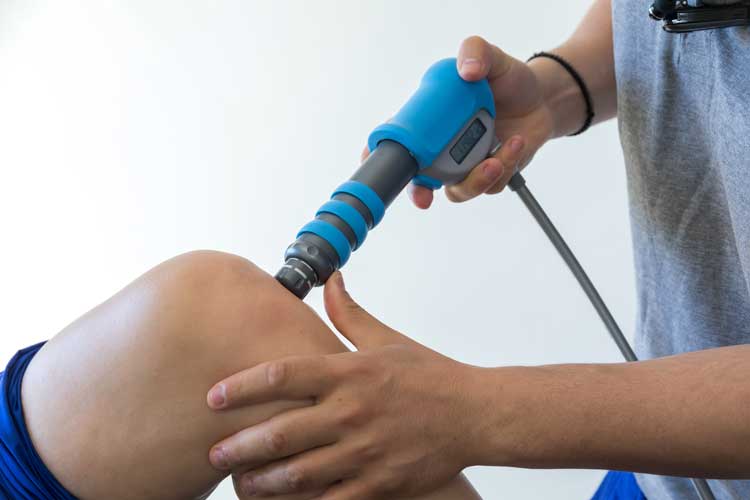
Shockwave Therapy.
Shockwave Therapy is a revolutionary technology used in orthopaedic and rehabilitation medicine. The term shockwave refers to mechanical pressure pulses that expand as a wave within the body.
This modern treatment involves shockwaves being passed through the skin to the injured part of the body. The shockwaves are made up of compressed air that is passed at high speed from a handheld applicator. The audible, low energy sound waves work by increasing blood flow to the injured area, stimulating cell regeneration and healing and decreasing local factors which can cause pain.
Shockwave Therapy is the most advanced, non-surgical and non-invasive treatment available for a wide range of conditions including plantar fasciitis, achilles tendinopathy, hip bursitis, tennis and golfer’s elbow, Osgood Schlatter disease, subacromial shoulder pain and calcific tendonitis of the shoulder.
Shockwave Therapy: Treatment
Shockwave Therapy is administered using the pioneering and globally recognised, Swiss Dolorclast unit. A course of four treatments, 7-10 days apart, is recommended, with a 6-week review period following the fourth treatment. This will give the body time to adapt and allows the shockwaves to effectively treat the pain centres. A further course can be applied for long-term improvements.
During the initial assessment, the treatment will also be administered, if appropriate. Ultrasound and soft tissue therapy techniques may be used in conjunction with the shockwave therapy treatment to achieve an overall improvement in symptoms. Shockwave therapy combined with rehabilitation exercises provides a superior outcome than the treatment in isolation. Therefore, rehabilitation exercises will be prescribed to optimise recovery and achieve the desired outcome.
Although the actual treatment lasts no more than 15 minutes, each treatment session will include education, advice and an appropriate post-treatment plan to further support your recovery.
How does it work?
- New Blood Vessel Formation – Nutrient blood flow is necessary to start and maintain the repair processes of damaged tissue. The application of the shockwave creates ‘capillary micro-ruptures’ in tendon and bone which increases blood flow.
- Dissolution of Calcified Fibroblasts – Calcium accumulation is most often the result of micro-tears or other trauma. Acoustic waves break up existing calcification.
- Stimulation of Collagen Production – The production of a sufficient amount of collagen is a necessary precondition for the repair processes of the damaged myoskeletal and ligamentous structures. Shockwave therapy accelerates ‘procollagen synthesis’.
- Reversal of Chronic Inflammation – Shockwave therapy works to enhance a positive inflammatory process and response, which helps restore normal healing and regenerative processes.
When Shockwave Therapy may not be suitable: Contraindications
Shockwave Therapy is unsuitable in the following circumstances:
- If you are pregnant
- If you have a blood clotting disorder (including thrombosis)
- If you are taking oral anti-coagulants
- If you have received a Steroid injection within 6 weeks
- If you have a pacemaker fitted
- If tumours are present at the treatment site
- If you have an infection or skin abrasion at the treatment site
- If you are under 18 (except in the treatment of Osgood-Schlatter disease)
- Any treatment over an air-filled area such as the lungs or guts
Shockwave Therapy Research: NICE guidelines
Read the Nice Guidelines on Extracorporeal Shockwave Therapy here:
Pricing.
One Area (30 minutes)
Two Areas (30 minutes)
What our patients say.
Contact us.
If you have a question, please either call the clinic or complete our contact form with details of you enquiry and we will be happy to help.
Tel: 01256 541515
Email: info@square-one.uk.com


